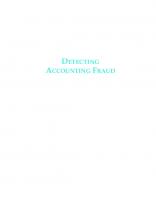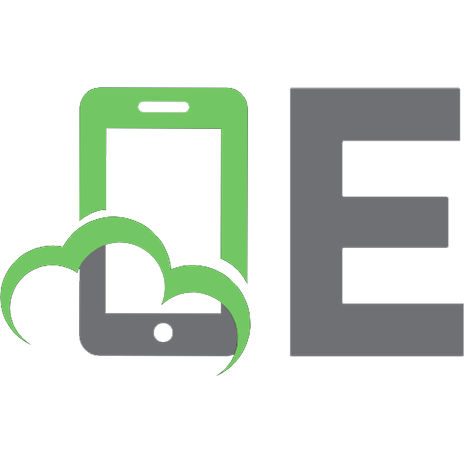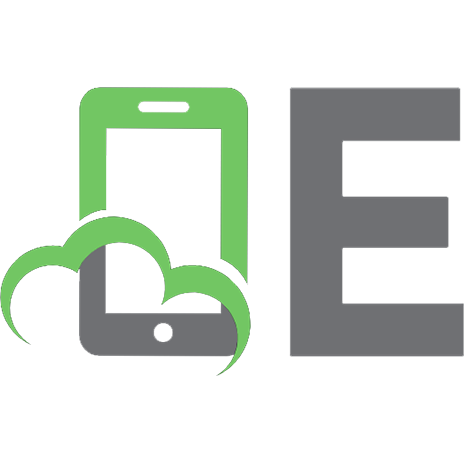Detecting Accounting Fraud Before It's Too Late 1119566843, 9781119566847
Detect accounting fraud before it’s too late Accounting fraud is the deliberate manipulation of accounting records in or
570 75 2MB
English Pages 208 [210] Year 2019
Table of contents :
Cover
Title Page
Copyright
Contents
Prologue
Introduction
Acknowledgments
Chapter 1 Fraud and Accounting Manipulations
1.1 Fraud and Its Effects
1.2 Modifying Companies' Financial Information
1.3 Calling Things by Their Name: From Creative Accounting to Big Baths
References
Chapter 2 Accounting Fraud: An Ancient Practice
2.1 The First Accounting Frauds
2.2 Accounting Frauds Continue with the Double Entry
2.3 The Crash of 1929 and the Obligation to Audit Accounts
2.4 Reinforcement of the Commercial Law and Auditing After the String of Scandals of 2000
2.5 With the Crisis of 2008, History Repeats Itself
References
Chapter 3 Problems with Legislation and Those Involved in the Financial Information
3.1 How Financial Information Is Generated
3.2 Auditing of Accounts: Essential, but Not Infallible
3.3 Analysts and Rating Agencies
3.4 Regulators and the Limitations of Accounting Regulations
3.5 Role of the Media
References
Chapter 4 Why Are Accounts Manipulated?
4.1 Motivation, Opportunity, and Rationalization
4.2 The Door to Fraud
References
Chapter 5 Legal Accounting Manipulations
5.1 Alternatives, Estimations, and Legal Gaps
Transactions That Can Be Accounted for by Choosing Among Several Alternatives
Uniformity
Relative Importance
Accounting Notes Based on Estimates That Imply a High Degree of Subjectivity
Gaps in the Accounting Standards
5.2 Main Legal Manipulations
5.3 Impact of Legal Manipulations in the Accounts
References
Chapter 6 Illegal Accounting Manipulations
6.1 Accounting Crime
6.2 How Illegal Manipulations Are Done
6.3 Operations Through Tax Havens
6.4 Main Illegal Manipulations
6.5 Main Items Affected by Accounting Frauds
References
Chapter 7 Ethical Considerations and Economic Consequences of Manipulations
7.1 The Ethical Dimensions of Accounting Fraud
7.2 Economic Consequences of Accounting Fraud
7.3 Consequences to Managers and Companies that Manipulate Accounts
7.4 What to Do When a Company Deteriorates
References
Chapter 8 Personal Warning Signs
8.1 Moments the Warning Signs Occur
8.2 Warning Signs Before Fraud Occurs
Motivation
Opportunity
Rationality
Profile of the Person
8.3 Warning Signs After the Fraud Occurs
8.4 Language of Fraudsters
8.5 Successful Businessmen Who End Up in Jail
References
Chapter 9 Organizational Warning Signs and Nonfinancial Indicators
9.1 Warning Signs Before a Fraud Occurs
Motivation
Opportunity
Rationality
Profile
9.2 Warning Signs After a Fraud Occurs
9.3 Warning Signs Based on Nonfinancial Indicators
References
Chapter 10 Warning Signs in the Accounts
10.1 Auditing of Accounts
Indicator Related to the Audit
10.2 Balance Sheet
10.3 Income Statement
10.4 Cash Flow Statement
Ratio of Difference Between Profit and Cash
Ratio of Difference Between Cash Flow and Cash Flow Generated by Operations
10.5 Statement of Changes in Equity
10.6 Notes
10.7 Ratios That Anticipate Frauds
Profitability and Margin Ratios
Liquidity Ratio
Debt Ratios
Z‐Score Formula
Example on How to Forecast the Default of a Company
10.8 Variations in Accounts that Warn of Frauds Already Produced
10.9 Ratios That Warn of Frauds Already Produced
Term Ratios
Asset Turnover
10.10 Synthetic Index to Detect Manipulating Companies
References
Chapter 11 Some Suggestions to Improve the Current Situation
11.1 Reinforce Values and Institute Ethical Codes
Teamwork
Social Responsibility
Incentives and Values
11.2 Improve Control Systems in Organizations
11.3 Improve Regulation
11.4 Reinforce Supervision
11.5 Reinforce the Sanctioning Regime
11.6 The Challenge of Providing Relevant Information for Decision‐Making
References
Epilogue
Appendix 1 Criminal Responsibility of Legal Entities and Regulatory Compliance
A1.1 Introduction
A1.2 Typified Conducts
A1.3 Crimes Attributable to Legal Entities
A1.4 Organization and Management Models
A1.5 Models of Prevention and Control
References
Appendix 2 Audit Program for the Identification of Fraud Risks
A2.1 Objective
A2.2 Conclusion
List of Companies Mentioned in the Book and Section in which They Appear
Index
EULA
Cover
Title Page
Copyright
Contents
Prologue
Introduction
Acknowledgments
Chapter 1 Fraud and Accounting Manipulations
1.1 Fraud and Its Effects
1.2 Modifying Companies' Financial Information
1.3 Calling Things by Their Name: From Creative Accounting to Big Baths
References
Chapter 2 Accounting Fraud: An Ancient Practice
2.1 The First Accounting Frauds
2.2 Accounting Frauds Continue with the Double Entry
2.3 The Crash of 1929 and the Obligation to Audit Accounts
2.4 Reinforcement of the Commercial Law and Auditing After the String of Scandals of 2000
2.5 With the Crisis of 2008, History Repeats Itself
References
Chapter 3 Problems with Legislation and Those Involved in the Financial Information
3.1 How Financial Information Is Generated
3.2 Auditing of Accounts: Essential, but Not Infallible
3.3 Analysts and Rating Agencies
3.4 Regulators and the Limitations of Accounting Regulations
3.5 Role of the Media
References
Chapter 4 Why Are Accounts Manipulated?
4.1 Motivation, Opportunity, and Rationalization
4.2 The Door to Fraud
References
Chapter 5 Legal Accounting Manipulations
5.1 Alternatives, Estimations, and Legal Gaps
Transactions That Can Be Accounted for by Choosing Among Several Alternatives
Uniformity
Relative Importance
Accounting Notes Based on Estimates That Imply a High Degree of Subjectivity
Gaps in the Accounting Standards
5.2 Main Legal Manipulations
5.3 Impact of Legal Manipulations in the Accounts
References
Chapter 6 Illegal Accounting Manipulations
6.1 Accounting Crime
6.2 How Illegal Manipulations Are Done
6.3 Operations Through Tax Havens
6.4 Main Illegal Manipulations
6.5 Main Items Affected by Accounting Frauds
References
Chapter 7 Ethical Considerations and Economic Consequences of Manipulations
7.1 The Ethical Dimensions of Accounting Fraud
7.2 Economic Consequences of Accounting Fraud
7.3 Consequences to Managers and Companies that Manipulate Accounts
7.4 What to Do When a Company Deteriorates
References
Chapter 8 Personal Warning Signs
8.1 Moments the Warning Signs Occur
8.2 Warning Signs Before Fraud Occurs
Motivation
Opportunity
Rationality
Profile of the Person
8.3 Warning Signs After the Fraud Occurs
8.4 Language of Fraudsters
8.5 Successful Businessmen Who End Up in Jail
References
Chapter 9 Organizational Warning Signs and Nonfinancial Indicators
9.1 Warning Signs Before a Fraud Occurs
Motivation
Opportunity
Rationality
Profile
9.2 Warning Signs After a Fraud Occurs
9.3 Warning Signs Based on Nonfinancial Indicators
References
Chapter 10 Warning Signs in the Accounts
10.1 Auditing of Accounts
Indicator Related to the Audit
10.2 Balance Sheet
10.3 Income Statement
10.4 Cash Flow Statement
Ratio of Difference Between Profit and Cash
Ratio of Difference Between Cash Flow and Cash Flow Generated by Operations
10.5 Statement of Changes in Equity
10.6 Notes
10.7 Ratios That Anticipate Frauds
Profitability and Margin Ratios
Liquidity Ratio
Debt Ratios
Z‐Score Formula
Example on How to Forecast the Default of a Company
10.8 Variations in Accounts that Warn of Frauds Already Produced
10.9 Ratios That Warn of Frauds Already Produced
Term Ratios
Asset Turnover
10.10 Synthetic Index to Detect Manipulating Companies
References
Chapter 11 Some Suggestions to Improve the Current Situation
11.1 Reinforce Values and Institute Ethical Codes
Teamwork
Social Responsibility
Incentives and Values
11.2 Improve Control Systems in Organizations
11.3 Improve Regulation
11.4 Reinforce Supervision
11.5 Reinforce the Sanctioning Regime
11.6 The Challenge of Providing Relevant Information for Decision‐Making
References
Epilogue
Appendix 1 Criminal Responsibility of Legal Entities and Regulatory Compliance
A1.1 Introduction
A1.2 Typified Conducts
A1.3 Crimes Attributable to Legal Entities
A1.4 Organization and Management Models
A1.5 Models of Prevention and Control
References
Appendix 2 Audit Program for the Identification of Fraud Risks
A2.1 Objective
A2.2 Conclusion
List of Companies Mentioned in the Book and Section in which They Appear
Index
EULA







![Forensic Accounting and Fraud Examination [2 ed.]
9781119494331](https://ebin.pub/img/200x200/forensic-accounting-and-fraud-examination-2nbsped-9781119494331.jpg)


